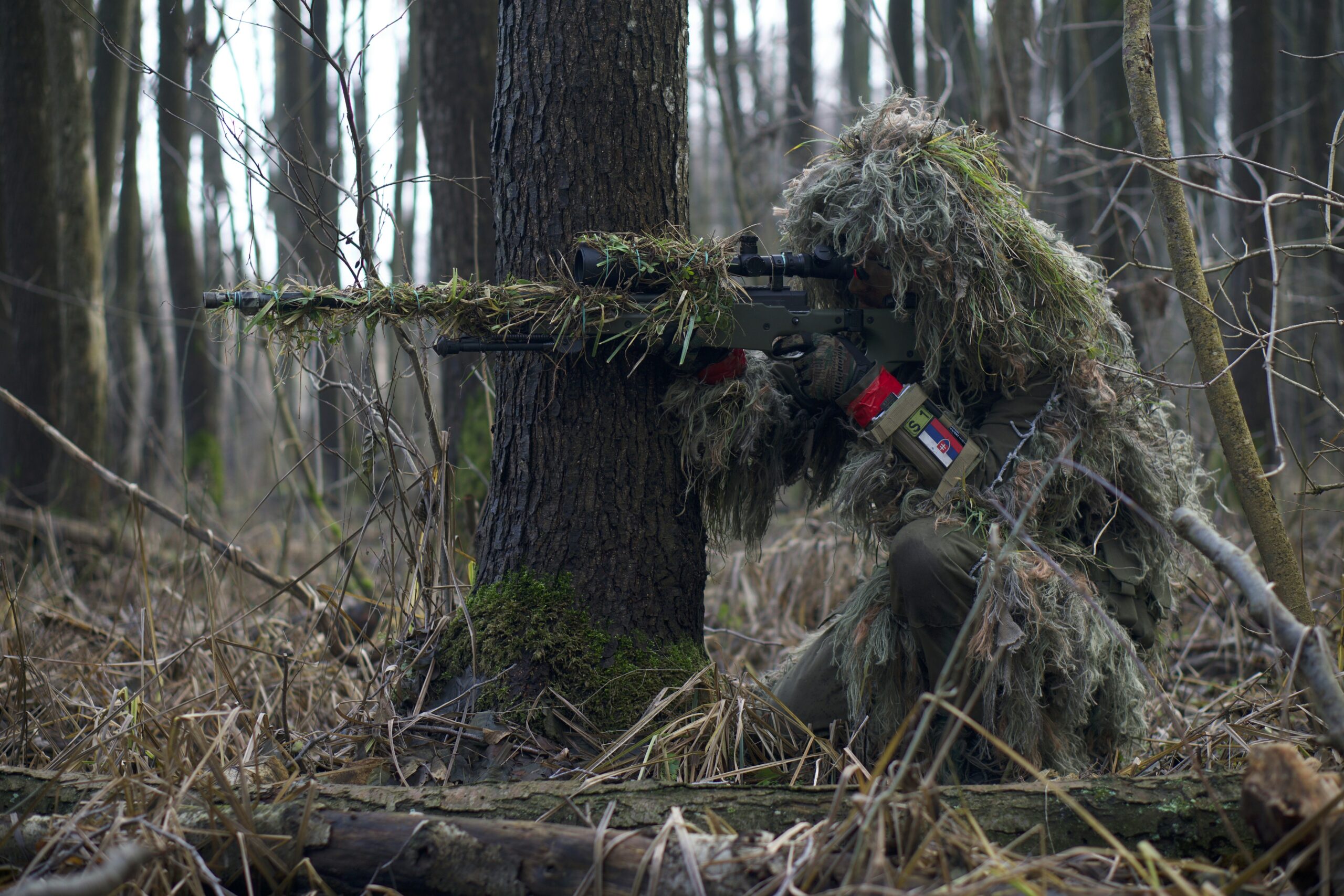Have you ever wondered how animals and humans alike master the art of disappearing into their surroundings? Camouflage techniques are as fascinating as they are intricate, offering a blend of strategy, skill, and creativity. Whether you’re a wildlife enthusiast, a student of nature, or someone curious about the tactics used in military operations, understanding camouflage can open a plethora of intriguing insights.
From the silent grace of a tiger blending into the tall grasses to the stealthy movements of a soldier in the field, camouflage serves a pivotal role in both survival and success. The online world is a treasure trove of resources where you can learn about these techniques, offering everything from scholarly articles, interactive tutorials, video demonstrations, to vibrant community forums.

Understanding the Basics of Camouflage
Before you dive into the resources, it’s essential to grasp the fundamentals of camouflage. It is the art of making an object or individual indistinguishable from the surrounding environment. Camouflage can be broken down into several core methods, each serving a unique purpose depending on the context.
Types of Camouflage
-
Crypsis: The primary aim here is to match the background. Think of a stick insect on a branch or a polar bear among snow and ice. Crypsis involves coloration and pattern matching for concealment.
-
Disruptive Coloration: This technique uses contrasting patterns to disrupt the outline of an object or person, making it harder to detect. Zebras, for example, use their stripes to confuse predators.
-
Mimicry: Mimicry involves copying the appearance of another object or organism. Certain butterflies mimic the appearance of unpalatable species to deter predators.
-
Countershading: This involves having a combination of dark and light colors, typically darker on top and lighter underneath. It helps to flatten the appearance and reduce shadows, as seen in sharks.
-
Motion Dazzle: Unlike the previously mentioned techniques, motion dazzle is used primarily while in motion, confusing observers’ perception through bold patterns.
Online Courses and Websites
Coursera and Other MOOC Platforms
Massive Open Online Courses (MOOCs) like Coursera are vital resources for structured learning. Courses often cover biodiversity and specific camouflage techniques, alongside discussing evolutionary biology and ecology principles. Many classes are taught by leading experts and include video lectures, reading materials, and assessments to solidify your understanding.
YouTube Channels
- Khan Academy: While not specifically camouflage-focused, Khan Academy offers profound insights into biology and natural sciences, including animal behavior and adaptation.
- MinuteEarth & SciShow: These channels provide easy-to-understand, engaging animations and discussions on ecological and evolutionary themes where camouflage is often featured.
Dedicated Websites and Blogs
- National Geographic: This treasured resource offers awe-inspiring articles and videos on wildlife and their survival strategies, including camouflage.
- BBC Earth: Home to documentaries and insightful articles, BBC Earth frequently discusses how animals use camouflage to their advantage.
- About.com Biology: Specifically, its section on animal adaptation and survival techniques regularly covers topics on camouflage.
Books and E-books
Noteworthy Reads
Books can be an excellent way of diving deep into the art and science of camouflage.
-
“Animal Camouflage: Mechanisms and Function” by Martin Stevens and Sami Merilaita: This book provides a comprehensive understanding of visual deception in nature, exploring both evolutionary theory and current research.
-
“Concealing Coloration in Animals” by Abbott Handerson Thayer: Often considered the father of camouflage, Thayer’s book provides historical insights into the development of camouflage understanding.
-
“Camouflage: Insects” by Jean-Philippe Siblet and Jean Lopez: If insects fascinate you, this book is a delightful resource illustrating how various bug species master the art of mimicry and concealment.
-
“Disruptive Pattern Material: An Encyclopedia of Camouflage” by Hardy Blechman and Alex Newman: This is an exhaustive insight into how camouflage has developed over time, with a specific focus on its military applications.
Interactive Resources and Online Communities
Forums and Discussion Groups
-
Reddit Communities (e.g., /r/biology, /r/nature): Reddit offers expansive communities where enthusiasts and professionals discuss the intricacies of camouflage, share articles, and present new findings or theories.
-
Stack Exchange (Biology Stack Exchange): An interactive Q&A platform where you can inquire about specific camouflage questions and receive expert-level responses.
Simulation Games and Virtual Labs
For a hands-on approach, several simulation games and virtual labs replicate camouflage dynamics, allowing you to experiment with patterns and strategies in a controlled virtual environment.
-
PhET Interactive Simulations: While predominantly science-focused, some simulations offer insight into environmental adaptations, including camouflage techniques.
-
Evolution Games and Apps (e.g., Spore, Evolution Simulator): These games allow you to experiment with creating organisms with different camouflage tactics to survive and thrive in various ecosystems.

Videos and Documentaries
For a more visual and experiential learn, documentaries and videos are perfect:
Must-Watch
-
“Planet Earth” and “The Blue Planet” by BBC: These documentaries showcase remarkable examples of camouflage across different animal species in a mesmerizing, cinematic way.
-
National Geographics’ “World’s Most Extreme” Series: This series often touches on extreme animal adaptations, including elaborate camouflage methods.
-
YouTube Channels like PBS Eons: They provide bite-sized pieces of information distilled into short episodes focusing on evolutionary history, including how and why certain camouflage strategies evolved.
Scholarly Journals and Articles
For those with a penchant for academic literature or research, several journals regularly publish articles on the biology of camouflage:
Top Picks
-
Journal of Experimental Biology and Functional Ecology: These journals publish cutting-edge research related to evolutionary biology, touching on various camouflage techniques.
-
Annual Review of Entomology: Particularly useful for understanding camouflage in insects and their evolutionary mechanisms.

Incorporating Camouflage into Your Interests
Nature Photography
Understanding camouflage can deeply enhance your experience and results in wildlife photography. Knowing where and how animals hide can improve your ability to spot and capture them beautifully in your shots.
Art and Design
Camouflage techniques are not just survival strategies but art forms. They have significantly influenced fashion, makeup, and design industries, all drawing on the original inspiration from nature. Exploring this connection can open new perspectives for artists and designers.
Outdoor and Survival Skills
Camouflage is an essential part of outdoor survival skills, whether you’re learning it for military, hunting, or hiking purposes. Familiarizing yourself with these techniques can increase your effectiveness and safety in nature.
Final Thoughts
Camouflage, as a technique, transcends its traditional roots in nature and military applications, extending to various fields such as art, design, and technology. By exploring the diverse online resources available, you can gain a broad, multifaceted understanding of how camouflage works and its importance across different domains. Whether through interactive learning platforms, engaging documentaries, or scholarly research, there’s a world of knowledge at your fingertips, waiting to be discovered.

